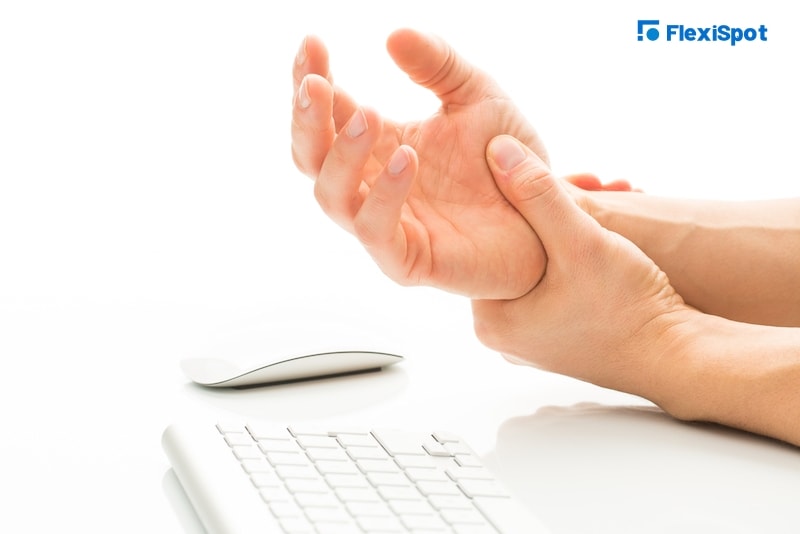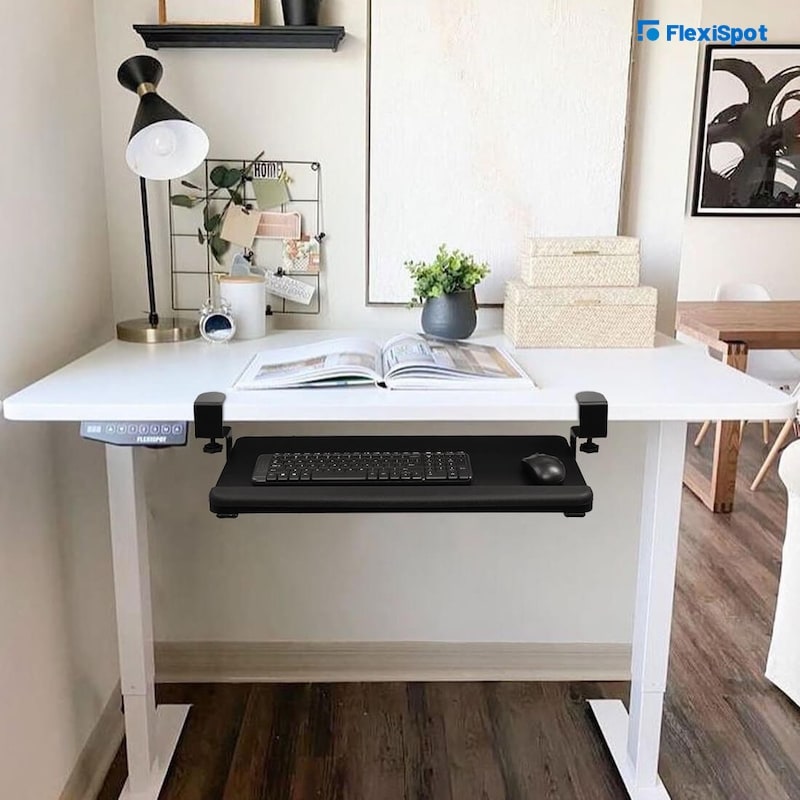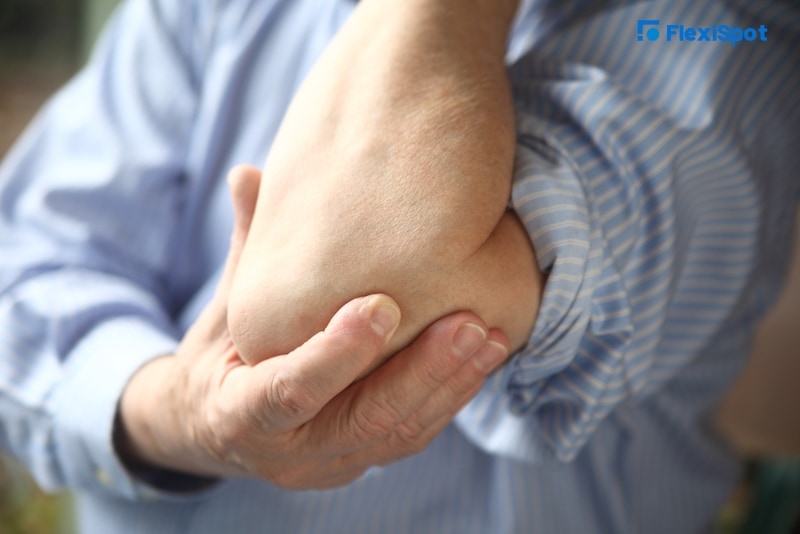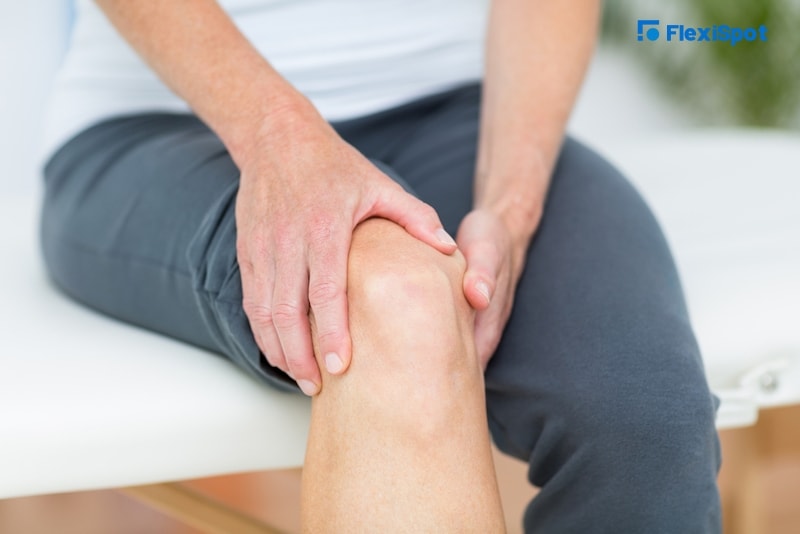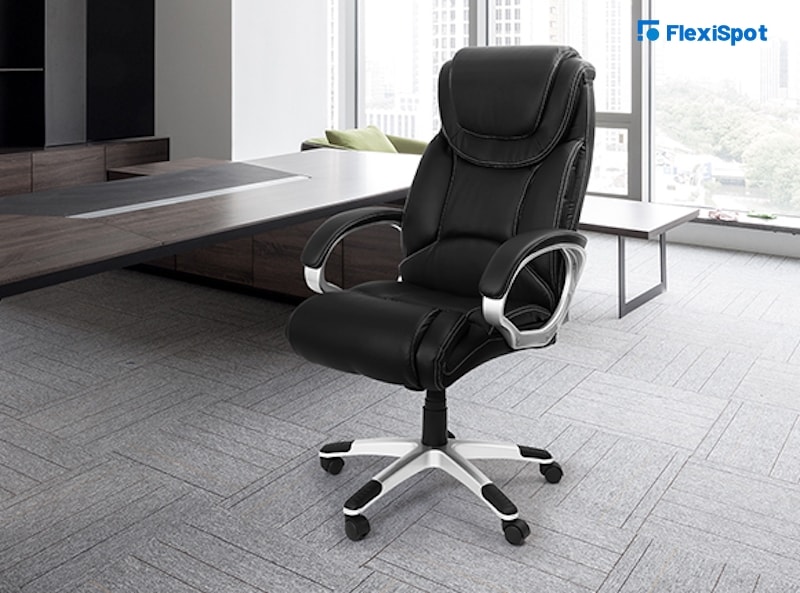We sit at our desks for most of the day, trying to keep up with mounds of tasks. The only time most office workers get up is for a bathroom break or when going out for lunch. This gives us the illusion of safety because it seems nothing could go wrong if you have such a low-key existence.
But, you'd be surprised how such a deskbound life can harm your body over time. When you think of office injuries, occupational hazards like slips & falls or electrocutions due to faulty equipment spring to mind. But, office workers also need to be wary of ergonomic injuries.
For one, sitting for long intervals isn't good for your health. This is especially true if you sit on an uncomfortable office chair that offers an inadequate level of lumbar support. As a result, you slump over, sit in awkward positions or hold your head to try and accommodate the discomfort. Constant typing, handling a mouse, and cradling a handset between your shoulder and ears also expose you to danger.
These are just a few of the situations that can activate stress, aches, and pains. And, the longer you wait before taking action, the more likely they are to develop into debilitating injuries that compromise your health and wellness.
This article hopes to share some of the causes of such injuries and remedies that will help you lead a happier, more focused, and productive life.
Lower Back Pain and Injury
Lower back pain is the most common ergonomic injury. The leading cause is muscle strain due to poor form when lifting and hauling heavy objects. Lower back injuries can result from sprains due to sudden movements, sitting or standing for too long, and awkward posture in the office environment.
Symptoms
1. Mild to achy sensations or pains in the lower back.
2. Tightening in the hip, pelvis, and lower back can manifest as muscle spasms.
3. A numbness that travels down to the thighs and as low as your feet.
4. Difficulty in getting up, standing straight, and walking
What Happens If Untreated
If lower back pain persists for more than 12 weeks, it could develop into chronic back pain, requiring lots of therapy or surgical intervention. You may also end up wearing a back brace and need to spend loads of time off your feet.
Untreated back pain can result in:
Dependency on pain medication
Anxiety
Depression
Insomnia (lack of sleep)
Loss of amenity (lack of peace of mind, lower libido)
Loss of mobility
Solution
The good news is you can stay ahead of lower back pain with a few easy exercises you can do right at your standing desk. An ergonomic office chair with enhanced lumbar support also comes in handy as it ensures proper spinal alignment at all times. If you work out at the gym, consider lifting weights as part of your routine, and remember to set resistance levels on fitness equipment accordingly.
Carpal Tunnel Syndrome (CTS)
The carpal tunnel is a narrow passageway of ligaments and bones in the wrist that holds the nerves, tendons, and a couple of arteries that go down to the hand. Carpal tunnel syndrome happens when these structures swell up. This causes pressure on the nerve responsible for sending signals from your neck to your fingers, making your fingers feel numb or "tingly" at times
It's common among secretaries, accountants, programmers, digital artists, and other professionals that type a lot in their workday.
Symptoms
1. Lower gripping strength and pain when trying to hold things
2. A throbbing pain that can work its way up to your forearm
3. Aches on your wrists that disrupt your sleep
4. Muscles spasms and numbness on your thumb, index, and middle fingers
What Happens If Untreated
The risk factors for untreated carpal tunnel syndrome include weaker hand-eye coordination and a weaker handgrip. If you continue to work with a damaged hand, you could develop permanent nerve damage even if you self-medicate on painkillers or muscle relaxers.
You may need a radical surgical intervention if you let your palms go numb. At times the damage can be irreversible. The only upside is you have a 95% chance of recovery if you consult an orthopedic doctor early.
Solution
The first step to avoiding CTS is sitting in a proper posture when using a computer. Getting an Adjustable Keyboard Tray for your standing desk is a positive step towards this endeavor as well. Then it's a matter of adjusting your workstation until it's ergonomically aligned. Switching to different tasks, taking frequent breaks, and flexing your fingers & wrists also helps.
Tennis Elbow (lateral epicondylitis)
Tennis elbow is a painful inflammation of the outer part of the elbow joint, often due to overuse. Tennis elbow is caused by repetitive hand and arm movement. Over time, small tears accumulate in the tendon that runs along the outside of your upper arm and through a bony prominence on the outside of your elbow (lateral epicondylar process). These tears result from repeated stress on the tendon from activity In many cases, swelling around this tendon causes it to become inflamed and tender when pressed. The pain of the tennis elbow is typically felt on the outside of your forearm and upper arm, near your elbow joint. This pain may spread up your forearm to your wrist and down to your thumb. You may feel tenderness when you touch the outside of your elbow. The pain sometimes spreads into your shoulder or neck muscles
Symptoms
1. A painful or stinging sensation on your elbow that starts mild but gets worse with time
2. Lifting things, operating tools, or something as simple as opening a jar becomes a painful experience
3. Weaker palm grip resulting in pain when shaking hands or squeezing things
What Happens If Untreated
The symptoms mentioned above worsen if you avoid getting medical attention. Eventually, you may need surgery and months of rehabilitation. The good news is tennis elbow responds to conservative treatment from an orthopedic doctor, so you can avoid surgery if you act fast.
Solution
The best way to avoid this condition is not to rely heavily on your dominant arm for repetitive tasks. Knowing the limits of the weight you can carry and stick to that also helps. Also, try making a conscious effort not to stretch your arms at unusual angles.
Rotator Cuff injury (Tendinitis)
This condition affects the tendons, which connect your muscles to bones. It usually manifests as an inflammation (swelling) that starts mild. But, it becomes severe if you don’t take any remedial action.
Tendinitis affects any muscle that you overexert as you work. It mainly affects mailroom staff and other office workers that bend, lift and pull things when dispensing with their tasks.
Symptoms
1. Stiffness, swelling, and pain on the affected shoulder and side of your arm
2. Intense pain when trying to reach for your back
3. A clicking or cracking sound when raising or extending your arm
4. Reduced strength and mobility in the affected arm
What Happens If Untreated
You should seek immediate medical attention if you suffer from any of the symptoms above. If not, you'll develop Chronic Tendinitis, a condition where the tendon ruptures or splits off the connected bone or muscle.
Solution
Practicing good form through proper posture when lifting, bending, and carrying items can help you avoid this condition.
Neck Injuries
Neck injuries are a common ergonomic injury among office workers. They usually come as a result of having to hold your head in unnatural poses for extended periods. This can lead to higher levels of discomfort, a cricked neck, and debilitating injuries.
Symptoms
1. Challenges when trying to turn your neck
2. Nausea and headaches
3. Spasms and throbbing tingles in the shoulder and neck muscles
4. Problems with your eyesight
5. Vertigo
What Happens If Untreated
Simple neck pains develop into secondary conditions like migraines. You may also experience shoulder pains that travel down your spine, causing aches and pains all over your body. However, it's hard to ignore neck pains, so most people opt for chiropractic interventions ahead of time.
Rehabilitative measures include chiropractic realignment therapies, acupuncture, and massage. Consulting a certified fitness instructor can also give you simple solutions like exercises to lessen the side effects.
Solution
An ergonomic office chair with optimal neck support is a sure-fire way of avoiding the problem in the first place. You can rest your head, relieving all that weight from your shoulders as you work in comfort and style.
A flexible and highly adjustable Monitor Mount D7L is another novel idea. With such an enhancement in place, you get to tilt, rotate and position your screen, so you don't have to adopt unnatural postures when working.
Knee strains and aches
Knee injuries are common among tall office workers but could affect you regardless of your stature. An office desk and chair combination with low ground clearance is the root cause. This is because you get less legroom, which forces you to bend your knees for long periods.
Symptoms
1. Pain, soreness, and swelling of the knee
2. A popping or cracking sound whenever you straighten your legs
3. Numbness and cold sensation on your toes
4. Feeling less stable as you walk
What Happens If Untreated
Like most simple strains, knee injuries develop into chronic pain if you don't take any rehabilitative measures. And, the older you get, the more vulnerable your knee joints become. You could also rupture your tendon or experience lower levels of synovial joint fluid.
Solution
Getting a height-adjustable desk allows you to designate the proper ground clearance. That way, you don't have to bend your knees or sit in the wrong posture. A standing desk also ensures adequate blood circulation to your knees and lower limbs.
While you’re at it, look into an adjustable ergonomic office chair so you can set it to give you adequate legroom as you work.
Eye Strain
Eye strain is another common and somewhat expected ergonomic occupational hazard many office workers face. It comes as a result of staring at bright glaring computer monitors all day.
Symptoms
1. Dryness & Itchiness of the eyes
2. Headaches and dizziness
3. Reduced hand-eye coordination
4. Reduced depth perception
What Happens If Untreated
The good news is eye strain doesn't cause any long-term or irreversible changes to your anatomy. But, the symptoms may worsen, causing significant drops in your comfort, concentration, and productivity levels.
Solution
Taking regular breaks where you rest your eyes or look away from your screen is highly recommended. You can also set lower levels of contrast on your monitor to reduce glare. Or get an AMOLED monitor as it doesn't light up dark pixels hence no glare.
If you can, include an annual appointment with your optometrist to get your eyes checked.
Conclusion
On the surface, ergonomic office injuries seem minor. But, as you can see, there’s more than meets the eye on their potential danger. That's why companies worldwide are waking up to the reality of dangers posed by ignoring the ergonomic concerns of their most precious asset – Their employees.
Dealing with the issues early on can save loads from your company’s medical copay and insurance scheme.
But, it's not merely about saving money. It's also about taking care of the people you rely on to help you reach your business goals each year. With that, you'll have a happier and more productive workforce and a lower turnover rate.


